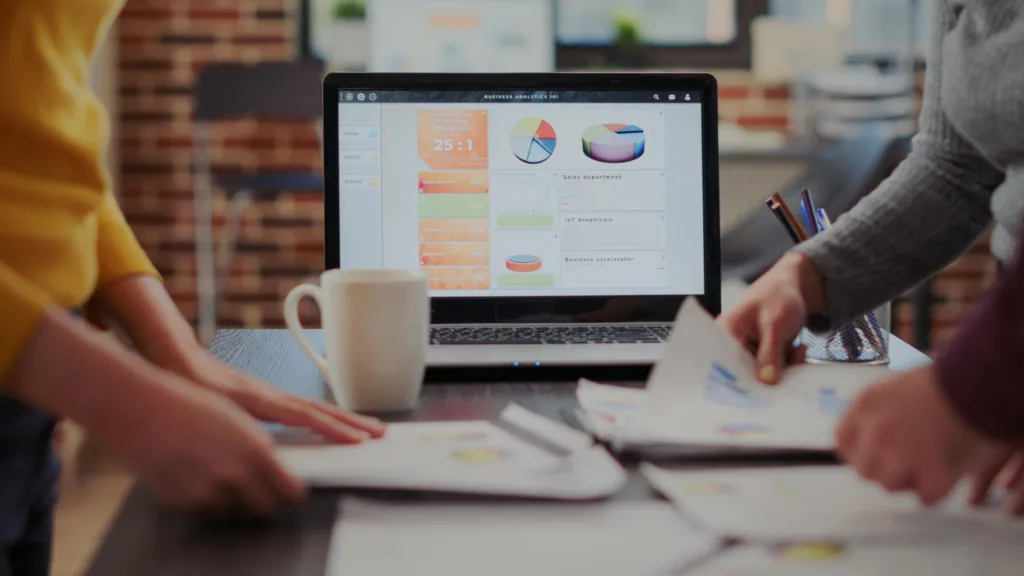When it comes to Software as a Service (SaaS), optimizing your sales funnel is what will make or break your sustained growth and success. One key metric to always be on top of and responding to is sales efficiency—a measure of how effectively your company converts resources into closed deals.
Understanding this metric, differentiating between gross and net sales efficiency, and comprehending its significance in the context of the SaaS industry are critical aspects for driving your business forward. In the following article, we’re going to do a deep dive into sales efficiency, how it is measured, what it measures and how to make it work for you.
What is Sales Efficiency?
At its essence, sales efficiency is the metric that quantifies how efficiently your company transforms its resources, notably time and money, into tangible results – closed deals. It is the gauge that offers insights into the effectiveness of your sales process by revealing the equilibrium between the costs incurred and the revenue generated.
For you, as a SaaS business leader, a keen understanding of sales efficiency is vital for making informed decisions that impact both your bottom line and overall growth strategy.
Whether it’s deciding to put more resources into something like SMS lead generation or giving your sales team better tools, knowing which processes contribute most to growth and the bottom line at the lowest cost is the aim of the game.
Sales Efficiency vs. Sales Effectiveness
It’s important to distinguish between sales efficiency and sales effectiveness, as they carry nuanced meanings. Sales efficiency zooms in on the resource utilization aspect, focusing on the ratio of costs to revenue.
In contrast, sales effectiveness is more concerned with the overall success of the sales strategy, irrespective of the resources used.
Balancing efficiency and effectiveness can be tough because there are parts of each that would seem to off balance the other, but getting it right is key to success in an increasingly competitive SaaS marketplace.
What is Gross Sales Efficiency?
Delving deeper, gross sales efficiency centers on the total costs associated with acquiring customers.
This includes direct expenses tied to sales, such as salaries, commissions, and marketing costs. Understanding gross sales efficiency provides a foundational perspective on the cost-effectiveness of your sales process and acts as a lens through which you can assess the efficiency of your team’s efforts in acquiring new customers, making informed decisions on resource allocation for future growth.
What is Net Sales Efficiency?
Taking a more comprehensive approach, net sales efficiency goes beyond direct costs and incorporates additional factors. This includes operational costs, product development, and any other indirect expenses related to the sales process. Being able to take this holistic view is instrumental in evaluating the overall health of your sales operations.
Net sales efficiency provides a clearer picture of the true costs associated with acquiring and retaining customers, allowing you to refine your strategies for sustainable growth.
Understanding these nuanced metrics is crucial in the context of your SaaS business, as it equips you with the insights needed to make strategic decisions that optimize your sales process and drive long-term success.
Why Sales Efficiency Matters
Now that we’ve established the foundations of sales efficiency, it’s imperative to grasp why this metric holds such significance in the intricate landscape of SaaS.
Sales efficiency serves as a compass, guiding your decision-making processes. It allows you to gauge the return on investment for your sales efforts, helping you allocate resources judiciously. By understanding sales efficiency, you can identify areas of improvement, refine strategies, and ultimately enhance the overall effectiveness of your sales team.
Being able to leverage sales efficiency as a strategic tool empowers you to make data-driven decisions that align with your broader business objectives.
How to Calculate Sales Efficiency For Your SaaS Business
Moving from understanding to implementation, calculating sales efficiency for your SaaS business is a structured process that requires a lot of attention to detail.
Sales efficiency calculations for a SaaS (Software as a Service) business typically involve assessing the effectiveness of the sales process in converting resources into revenue. Several key variables contribute to these calculations, and they can vary based on the specific metrics and goals of the business. Here are some common variables considered in sales efficiency calculations for SaaS businesses:
Customer Acquisition Cost (CAC): CAC represents the total cost associated with acquiring a new customer. It includes expenses related to marketing, sales, and any other costs directly attributed to customer acquisition.
Revenue: The total revenue generated from the acquired customers is a fundamental variable in sales efficiency calculations. This includes both initial purchases and recurring revenue from subscription models.
Gross Margin: Gross margin reflects the profitability of each sale after accounting for the direct costs associated with delivering the SaaS product or service. It helps in understanding how efficiently the business converts sales into profit.
Sales and Marketing Expenses: This includes the costs incurred for sales and marketing activities, such as salaries, commissions, advertising, and promotional expenses. These costs are essential to acquiring and retaining customers.
Time to Payback CAC: This metric indicates how long it takes for the business to recover the CAC through the generated revenue. A shorter payback period is often considered more efficient.
Customer Lifetime Value (CLTV or LTV): CLTV represents the total revenue a business expects to earn from a customer throughout their entire relationship. It provides insights into the long-term value of acquired customers.
Churn Rate: Churn rate measures the percentage of customers who cancel or do not renew their subscriptions. High churn can negatively impact sales efficiency, as it requires more resources to acquire new customers to compensate for those lost.
Conversion Rates: Conversion rates at different stages of the sales funnel, from lead to customer, help assess the efficiency of the sales process. Improving conversion rates can positively impact overall sales efficiency.
Sales Cycle Length: The time it takes to convert a lead into a paying customer is an important variable. A shorter sales cycle can contribute to higher efficiency by reducing resource investment per customer.
Average Revenue Per User (ARPU): ARPU measures the average revenue generated per customer. It provides insights into the value each customer brings to the business.
Operational Efficiency Metrics: Operational efficiency metrics, such as the number of deals closed per salesperson or the cost per demo, can also contribute to understanding overall sales efficiency.
These variables are often used in combination to calculate key performance indicators (KPIs) that provide a comprehensive view of how efficiently a SaaS business is acquiring and retaining customers. Keep in mind that the specific metrics and formulas used can vary based on the business model, industry, and goals of the SaaS company.
What is a Good Sales Efficiency Ratio?
The answer lies in industry benchmarks, the specific dynamics of your business, and your growth goals.
A high sales efficiency ratio indicates that your team is effectively converting resources into revenue, a commendable feat in any industry. Benchmarking your sales efficiency against industry standards and continuously monitoring this ratio provides a benchmark for success and allows you to continuously refine your approach, ensuring that your sales strategy remains adaptive and aligned with the ever-evolving dynamics of the SaaS marketplace.
Why is it Important to Measure Sales Efficiency?
The importance of measuring sales efficiency extends beyond a mere performance metric. It serves as a diagnostic tool, offering insights into the health of your sales operations. By routinely measuring sales efficiency, you gain a deeper understanding of the effectiveness of your strategies and their impact on your bottom line.
This constant evaluation empowers you to identify trends, adjust your approach based on market dynamics, and stay agile in the face of industry changes. The proactive measurement of sales efficiency is a strategy that will inform current decision-making and shape the trajectory of your future growth.
6 Ways to Improve Sales Efficiency
Below are 6 ways to improve sales efficiency for SaaS companies, recognizing the industry and business-model specific demands and bottlenecks.
Leverage Data-Driven Insights
In the intricate landscape of SaaS, handling vast datasets from user interactions, trial periods, and subscription renewals is a common challenge, especially when it comes to avoiding unnecessary data silos. To overcome this, SaaS businesses can implement advanced analytics and machine learning tools.
These technologies enable the thorough analysis of customer behavior, identification of patterns, and prediction of potential churn. By leveraging these insights, businesses can personalize sales strategies, enhance upselling and cross-selling efforts, and proactively address customer concerns before they escalate into cancellations.
Optimize Customer Onboarding
SaaS businesses often encounter difficulties during customer onboarding, such as complex processes or challenges in showcasing immediate value. To tackle this, streamline onboarding experiences to quickly demonstrate the value of the SaaS product. Implement guided tours, video tutorials, and personalized onboarding plans to enhance the user experience.
Incorporate automation to ensure a smooth transition from trial to active usage, reducing friction and boosting conversion rates.
Implement Scalable Sales Processes
Scaling sales operations while maintaining efficiency is a perpetual challenge for SaaS businesses.
To address this, develop standardized and scalable sales processes. Automation tools can be employed for routine tasks like lead scoring and follow-ups and help you create a well-defined sales funnel that aligns with the SaaS customer journey, from awareness to conversion, and ensure seamless integration between marketing and sales efforts for a cohesive approach.
Customer Success Integration
Efficient communication between sales and customer success teams is crucial for SaaS success.
You can better foster collaboration by integrating customer success metrics into the sales process and emphasizing long-term value over mere customer acquisition. Improve this nexus by establishing feedback loops between the two departments to ensure continuous improvement in aligning customer needs with the SaaS solution, enhancing overall efficiency.
Flexible Pricing Models
Determining the right pricing model is a common challenge for SaaS businesses. To overcome this, offer flexible pricing models that cater to different customer segments.
Consider tiered subscription plans, freemium models, or usage-based pricing and regularly assess and adjust pricing strategies based on market trends and customer feedback, striking a balance between perceived value and revenue maximization.
Invest in Sales Training and Development
In the dynamic SaaS industry, staying updated on product features, industry trends, and evolving customer needs is essential for sales teams. Prioritize ongoing training and development to equip sales representatives with the necessary skills.
It is up to you to provide regular updates on product features, market dynamics, and competitive landscapes to ensure that the sales team remains agile and responsive to changes in the SaaS landscape, contributing to enhanced sales efficiency.
How Inside Sales Can Make Your Business More Efficient
Inside sales plays a pivotal role in enhancing the efficiency of a SaaS (Software as a Service) business in a number of ways. One significant aspect is the cost-effective nature of inside sales operations. Conducted remotely through digital channels, inside sales eliminates the need for extensive travel, reducing associated expenses.
With centralized operations and a lack of requirement for a physical presence at customer locations, inside sales can be a highly financially efficient strategy, contributing to improved overall cost-effectiveness and a healthier bottom line for the SaaS business.
Wrapping up
The intricate subscription-based model, combined with evolving customer expectations, necessitates a keen focus on optimizing every aspect of the sales process.
By embracing data-driven insights, streamlining customer onboarding, fostering collaboration between sales and customer success, and staying agile in response to market dynamics, SaaS business leaders can cultivate an environment where efficiency becomes a driving force for sustainable growth.




